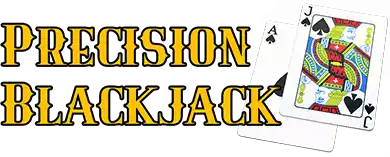Why Understanding Blackjack Variants Is Crucial to Winning Big
Why Understanding Blackjack Variants Is Crucial to Winning Big
The Diverse World of Blackjack
Blackjack is one of the most popular casino games globally, known for its blend of strategy, skill, and luck. However, many players may not realize that blackjack isn’t just one game—it’s a family of games with numerous variants, each with its own unique rules, strategies, and house edges. Understanding these variants is crucial if you want to maximize your winnings and minimize the house’s advantage.
In this article, we’ll explore why it’s essential to understand different blackjack variants and how doing so can significantly impact your success at the tables. We’ll cover some of the most common variants, their specific rules, and how you can adapt your strategy to each one. By the end, you’ll be better equipped to choose the right variant for your play style and increase your chances of winning big.

What Are Blackjack Variants?
Blackjack variants are different versions of the standard blackjack game, each with its own set of rules and conditions. While the basic objective—beating the dealer without busting—remains the same, the nuances of each variant can influence the game’s difficulty, house edge, and the strategies you should employ.
Why Variants Matter
Understanding the differences between blackjack variants is crucial because:
- Rule Variations Affect the House Edge: Even small changes in the rules can significantly impact the house edge, which in turn affects your chances of winning.
- Strategy Must Be Adjusted: The optimal strategy for one variant may not apply to another. Adapting your approach to fit the specific rules of each variant is key to maximizing your success.
- Choosing the Right Variant Can Maximize Profits: Some variants offer better odds or higher potential payouts, making them more advantageous for skilled players.
Common Blackjack Variants and Their Rules
Let’s take a closer look at some of the most common blackjack variants you’re likely to encounter in casinos, both online and offline.
- Classic Blackjack
Classic Blackjack is the most traditional and widely played version of the game. It’s often the default version that players learn first.
- Key Rules:
- The game uses one to eight decks of cards.
- The dealer stands on all 17s (soft and hard).
- Players can double down on any two cards.
- Players can split pairs up to three times (totaling four hands).
- Only one card is dealt to split Aces.
- Blackjack pays 3:2, and insurance pays 2:1.
- Strategy Tip: Classic Blackjack is the basis for basic strategy, so mastering this version is essential before moving on to more complex variants.
- European Blackjack
European Blackjack is a popular variant in European casinos and online gaming platforms. While it shares many similarities with Classic Blackjack, there are key differences that impact strategy.
- Key Rules:
- The game typically uses two decks of cards.
- The dealer stands on all 17s.
- Players can double down only on hands totaling 9, 10, or 11.
- There’s no hole card—meaning the dealer doesn’t check for blackjack until the end of the round.
- Players can split pairs only once, and no resplitting is allowed.
- Strategy Tip: Since the dealer doesn’t take a hole card, doubling down becomes riskier. Adjust your doubling down strategy accordingly to avoid losing more when the dealer reveals a blackjack.
- Atlantic City Blackjack
Atlantic City Blackjack is a popular variant in the United States, particularly in Atlantic City casinos. It’s known for player-friendly rules that reduce the house edge.
- Key Rules:
- The game uses eight decks of cards.
- The dealer stands on all 17s.
- Players can double down on any two cards.
- Players can split pairs up to three times.
- Late surrender is allowed—players can forfeit half their bet after the dealer checks for blackjack.
- Blackjack pays 3:2.
- Strategy Tip: Take advantage of the late surrender option to minimize losses in unfavorable situations, especially when the dealer shows an Ace or a 10.
- Spanish 21
Spanish 21 is a unique variant that removes all the 10s from the deck, leaving only 48 cards. Despite this, the game offers a range of player-friendly rules and bonuses.
- Key Rules:
- The game uses six to eight decks, each with all 10s removed (Jacks, Queens, and Kings remain).
- The dealer stands on all 17s.
- Players can double down on any number of cards.
- Players can surrender at any time, even after doubling down.
- Blackjack always wins, even against a dealer’s blackjack.
- There are bonuses for five-card 21s, six-card 21s, and 7-7-7 hands.
- Strategy Tip: Since 10s are removed, the odds of landing a blackjack are lower, but the numerous bonuses can make up for it. Focus on maximizing opportunities for these bonuses by adjusting your play style to favor multi-card 21s.
- Double Exposure Blackjack
Double Exposure Blackjack is a variant where both of the dealer’s cards are dealt face-up, giving players a significant informational advantage. However, this comes with trade-offs that increase the house edge.
- Key Rules:
- Both of the dealer’s cards are dealt face-up.
- The dealer wins all ties except for a natural blackjack.
- Blackjack pays even money instead of 3:2.
- Players can double down on any two cards.
- No insurance or surrender is allowed.
- Strategy Tip: Use the additional information provided by the dealer’s exposed cards to make more informed decisions. However, be cautious of the even-money payout for blackjack and the dealer’s tie-win rule, which can eat into your profits.

Adapting Your Strategy to Different Variants
Understanding the specific rules of each blackjack variant is the first step, but adapting your strategy is where you can truly gain an edge. Here’s how to adjust your approach for different variants:
- Adjusting Basic Strategy
While basic strategy is a solid foundation, it must be adapted to fit the rules of each variant. For example, in European Blackjack, where the dealer doesn’t check for blackjack until the end, you might want to be more conservative with doubling down.
- Take Advantage of Player-Friendly Rules
Some variants, like Atlantic City Blackjack and Spanish 21, offer rules that are more favorable to the player. Be sure to capitalize on options like late surrender, doubling down on multiple cards, and special bonuses. Understanding how to leverage these rules can significantly boost your chances of winning.
- Be Cautious with High-House-Edge Variants
While variants like Double Exposure Blackjack offer exciting twists, they often come with higher house edges. Approach these games with caution, and be aware of how the rule changes impact your overall odds. In these cases, it’s essential to adjust your bet sizes and strategies to account for the increased house advantage.
- Precision Blackjack: A Strategy for All Variants
The Precision Blackjack system is one of the leading tutorial betting systems designed to be adaptable across different blackjack variants. It combines card counting with flexible betting strategies, allowing players to adjust their approach based on the specific rules of the variant they’re playing. By using Precision Blackjack, you can make informed decisions that account for the unique aspects of each game, giving you a consistent edge regardless of the variant.
Why Choosing the Right Variant Matters
Selecting the right blackjack variant is crucial for maximizing your winnings. Each variant comes with its own set of challenges and opportunities, and the key to success is knowing which variant aligns best with your skills, risk tolerance, and strategy.
- Match the Variant to Your Play Style
If you prefer a more traditional game with familiar rules, Classic Blackjack or Atlantic City Blackjack might be your best bet. However, if you enjoy a game with more opportunities for big payouts and bonuses, Spanish 21 or 21+3 might be more up your alley.
- Consider the House Edge
Always consider the house edge when choosing a variant. Some games, like Spanish 21, offer opportunities for high payouts but come with specific rule changes that can increase the house edge if not played correctly. Choose variants where you feel comfortable with the rules and where you can minimize the house advantage through strategic play.
- Adaptability is Key
Being adaptable is a valuable skill in blackjack. The ability to shift your strategy based on the variant you’re playing will significantly increase your chances of winning. By understanding the nuances of each variant and adjusting your strategy accordingly, you’ll be able to navigate the complexities of different games and consistently come out ahead.
Conclusion: Mastering Blackjack Variants for Bigger Wins
Understanding blackjack variants is more than just knowing the rules—it’s about adapting your strategy, maximizing your opportunities, and choosing the games that give you the best chance of success. By mastering the nuances of different variants and applying the right strategies, you can turn the tables in your favor and increase your winnings.
Whether you’re playing Classic Blackjack, exploring the bonuses of Spanish 21, or navigating the challenges of Double Exposure, the key is to be informed and adaptable. And with the Precision Blackjack system, you can confidently approach any variant, knowing that you have a powerful strategy tailored to succeed in any game.
Good luck at the tables, and may your understanding of blackjack variants lead you to big wins!

